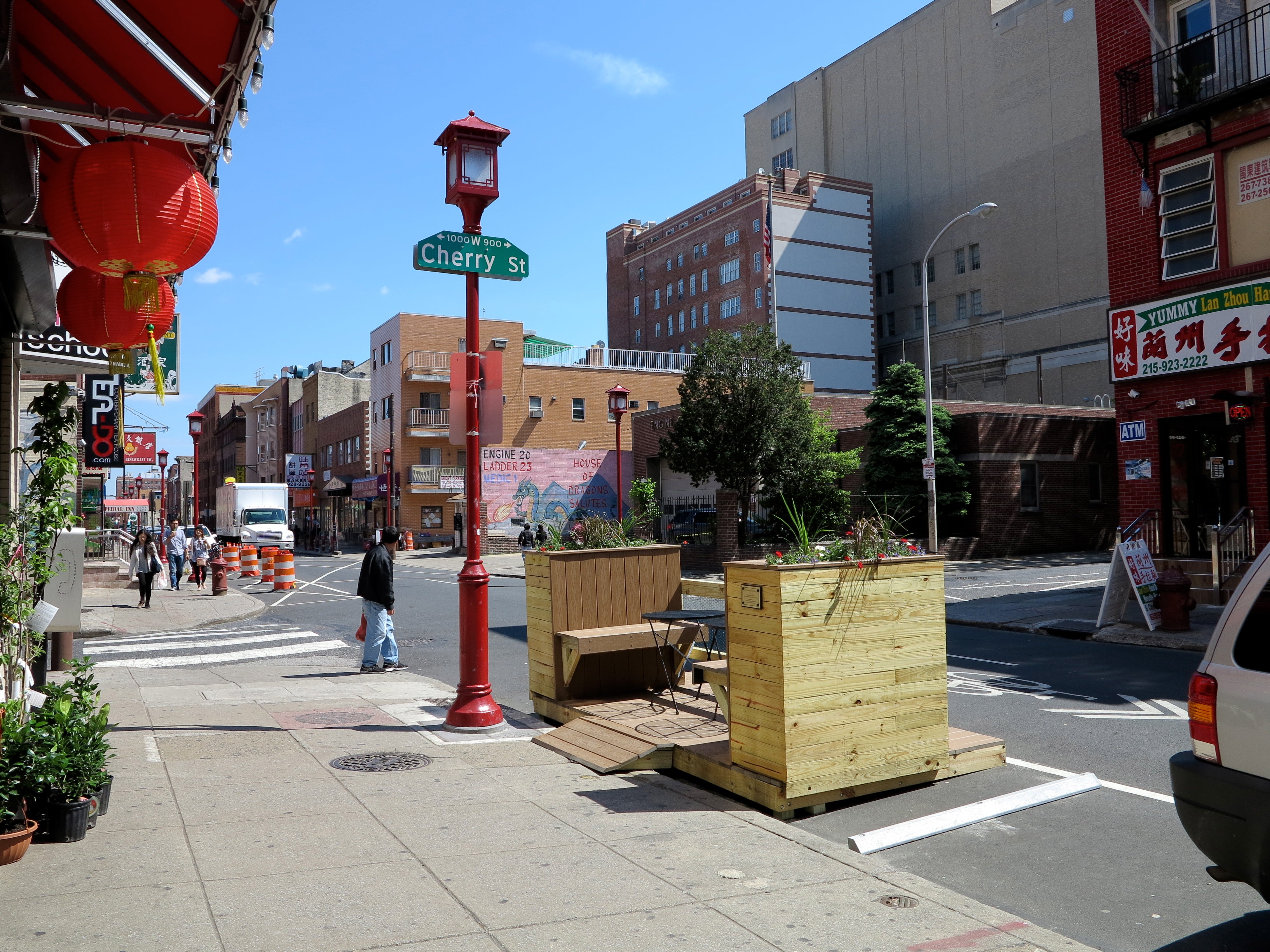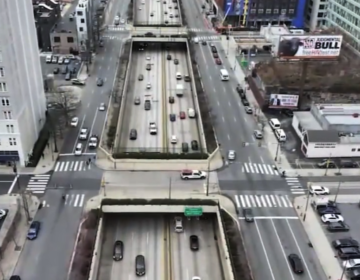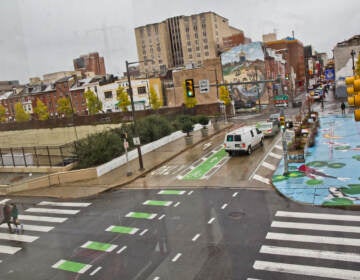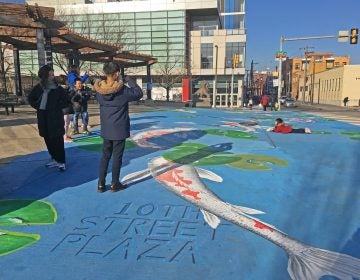As Rebuild promises $500 million to rehab rec centers, Chinatown asks: What about us?

Last month, you shared with us your pressing questions about Rebuild, Philadelphia’s $500 million plan to rehab the city’s parks, libraries and rec centers. More than 400 of you voted on which submitted question to answer. With 161 votes, Sarah Yeung and Anna Perng’s question won: If ‘every neighborhood matters,’ what about the ones who never had parks or rec centers in the first place? Do parklets count?”. Now, our civic assets contributing reporter, Malcom Burnley, answers.
No matter which way you slice the boundaries of Chinatown, the neighborhood has grown dramatically in recent years. Its population has more than doubled in size and grown more affluent, reflected in the built environment by luxury condos and high-end apartments cropping up on the neighborhood’s northern and southern outskirts, from Goldtex to the Ludlow. The racial demographics are also changing.
Taking just the census tract encompassing the historical core of Chinatown (a tract that reaches from Vine to Race, Broad to 7th Street), the white population has doubled as a percentage of the community between 2000 and 2010, a change that has prompted some watchers to wonder if Philadelphia’s Chinatown will go the way of so many other cities: Turn into a Potemkin Village with a dwindling Asian base.
While gentrification has already forced some longtime residents to leave, there’s a more basic — though, arguably, no less existential — concern that others are struggling with. Chinatown lacks a rec center at a time when demand for one mounts each day. Between 2000 and 2010, the number of families with children under 18 living within the core census tract increased by 53 percent.
One of those families is that of Mandy Lin, a Chinese immigrant who moved to Chinatown in 2011 but has been in the U.S. for more than two decades. “It’s been a two-year search for recreational and sports activities that my daughter can participate in,” she says, speaking in Mandarin through an interpreter to PlanPhilly.
Like a lot of teenagers with an eye towards college applications, Mandy’s 15-year-old daughter, who attends Central High School, has been trying to absorb as many extra curricular activities as possible. But the options in the family’s immediate area have proven limited. “Because we live in Chinatown, we pay [more] compared to a lot of my friends who live in the Northeast or South Philly. We also have to pay for monthly parking,” Mandy says.
There’s not a single rec center, playground, or pool run by Parks and Rec nearby, let alone one with ample programing for children like Mandy’s son, who has a disability. Traveling on SEPTA, Mandy takes her son to the Christian Street YMCA a couple miles away in Southwest Center City.
One reason why Mayor Jim Kenney has put together Rebuild, a $500-million investment in public parks, rec centers, playgrounds, and libraries, is the reality that needs for improved recreational facilities exist citywide. But the map of 406 potential sites for Rebuild investment only includes one within Chinatown: Franklin Square, on the neighborhood’s northeast corner, a park best known in recent years for its money-making tourist attractions than its wholesome neighborhood vibes.
With Rebuild coming down the pike and with experiences like Mandy’s in mind, community resident and advocate Anna Perng had a question for PlanPhilly, which she submitted via the audience-driven story generator Hearken: “If ‘every neighborhood matters,’ why is Chinatown never on the map?”
From there, PlanPhilly put a version of the question to the Rebuild team: For neighborhoods like Chinatown that don’t have a park or rec center in the first place, what can Rebuild do for them? PlanPhilly received this response from Nicole Westerman, executive director of Rebuild:
We know there are sections of the city that are more underserved than others when it comes to parks, recreation centers, and libraries, and we are doing everything we can to reach as many communities as possible through Rebuild. The unfortunate reality is that we don’t have the resources to reach every neighborhood. Rebuild was designed to rehabilitate the parks, recreation centers and libraries across Philadelphia – most of which have fallen into some level of disrepair over the last few decades due to a lack of resources to adequately maintain them. But even $500 million is not enough to address the needs of the entire system – we would need roughly twice that amount to bring all sites up to the condition we’d like them to be in. This also makes it difficult to build brand new sites since we are already struggling to keep up with the ones we have. The last thing we want to do is build a site only to see it fall into disrepair a few years later. These are tensions that Rebuild is trying to manage. We want to reach as many people as possible, but also don’t want to make commitments that we can’t keep. We are always on the lookout for creative solutions that could help us expand our reach in a sustainable way so underserved neighborhoods can have better access.
Chinatown isn’t alone. Numerous neighborhoods in North Philadelphia lack a rec center, such as Nicetown, as do parts of Center City. But the paucity of Rebuild-eligible sites in Chinatown, especially given the density of the neighborhood, is unique.
Part of the problem has been the dwindling available space in the neighborhood over recent decades. According to a 2004 report, “approximately 25% of Chinatown’s land area, housing and commercial stock has been lost to urban redevelopment projects,” such as the Pennsylvania Convention Center. Plus, the one robust expansion of outdoor recreation space underway, the Reading Viaduct, figures to increase gentrification further — and while it may provide benefits to Chinatown, it also stands to attract a bevy of tourists.
There is some relief in sight for Chinatown residents, in the form of the $76 million Eastern Tower community center that is expected to break ground this fall. Once complete, the mixed-use Eastern Tower will include a 7,500-foot gymnasium and meeting rooms. But Perng believes that will be nothing more than a Band-Aid for a much larger problem. “In Franklin Square, because there is no other playground, a lot of the Head Start programs in the area all have to congregate there [at Franklin Square],” says Perng. “At the children’s village alone, up to 500 kids use that playground every day. All the preschools have to take turns.”
Perng formed a change.org petition to push city officials to consider additional space in Chinatown for recreation-minded development. One of the two officials to whom the petition was addressed is Councilman Mark Squilla, who represents Chinatown. Squilla, who did not appear to be aware of the petition, applauded the impending arrival of Eastern Tower but also acknowledged how difficult, from a funding and bureaucratic perspective, that project proved to be. “The Eastern Tower community center, they’ve been working on that over 10 years,” Squilla says. “These things do take time, and resources are not easy to come by.”
Further, Squilla says, practically every corner of his district has constituents who clamor for upgraded facilities; it’s not just Chinatown. “Half our fields are cinders. It’s not even like they’re playing on grass,” Squilla says. “We have to take these facilities up to snuff, but we also have to be able to maintain them.” A new facility adds to the an already stretched-thin Parks and Rec department, he suggested.
Perng has been increasingly trying to organize neighborhood stalwarts like Asian Americans United and Philadelphia Chinatown Development Corporation — the developer of Eastern Tower — around the issue of rec space. If not Rebuild, Perng is dead set on garnering public support for Chinatown’s first rec center in short time. “Do we really need more hotels and parking lots?” she says.
WHYY is your source for fact-based, in-depth journalism and information. As a nonprofit organization, we rely on financial support from readers like you. Please give today.






